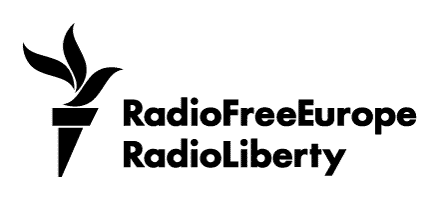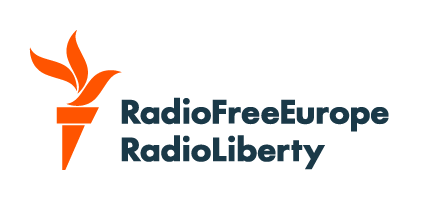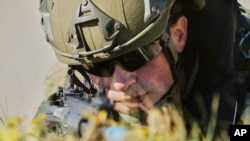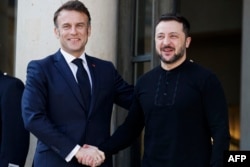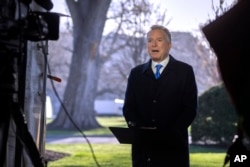Exactly a month since British Prime Minister Keir Starmer announced the formation of a “coalition of the willing” to form a military mission to Ukraine, many questions remain.
Starmer said the plan would involve British “boots on the ground and planes in the air, together with others.”
This immediately raised uncertainty about who will contribute and how. Answers are still scarce.
Who Could Send Troops To Ukraine?
So far, France is the only other nation that has made a clear commitment to send military forces to Ukraine as part of the mission.
The London conference and subsequent meetings have involved some 30 countries. Some of these will probably be involved in a backup function.
Germany, for instance, has made noises about sending troops under a UN-mandate, but Russia opposes the mission and would veto it. So, Berlin’s involvement would likely be based on out-of-country support, such as logistics.
Ukrainian President Volodymyr Zelenskyy met in Kyiv on April 1 with outgoing German Foreign Minister Annalena Baerbock, saying that a "narrow circle of countries" is willing to send contingents.
Some countries have indicated that they could be in that circle.
Asked about sending troops, Swedish Prime Minister Ulf Kristersson said it was “ready to help… under certain conditions”, while Danish Foreign Minister Lars Lokke Rasmussen said his country was prepared for it “in principle.”
Australian Prime Minister Anthony Albanese has said his country may send “a small contribution,” but he faces elections in May. Belgium said it would be "logical" to participate.
Some of the 30 countries have ruled out sending troops, such as Poland, which is prioritizing its own immediate security concerns vis-a-vis Russia and Belarus. Greece has also said it won’t deploy.
Turkey, a major military power neighboring Ukraine with substantial air and naval assets, would be a big potential contributor. It has not made a clear statement one way or the other.
What Would Western Troops Do In Ukraine?
The initiative has often been referred to as a peacekeeping mission, but this is a misnomer.
"If we call it a 'peacekeeping mission,' we usually mean a peacekeeping mission within the framework of the UN, which requires participation in the agreements of both sides. An 'assurance mission' does not require Russia's consent," a NATO diplomat told RFE/RL’s Ukrainian Serviceon April 1.
The idea is that, after a cease-fire or peace deal is reached, the force deploys to help give Ukraine confidence that Russia won’t attack it again.
“If there was again a generalized aggression against Ukrainian soil, these armies would be under attack and then it’s our usual framework of engagement,” French President Emmanuel Macron said ahead of a summit held by the coalition in Paris on March 27.
“Our soldiers, when they are engaged and deployed, are there to react and respond to the decisions of the commander in chief and, if they are in a conflict situation, to respond to it.”
But a frontline deployment is not envisaged.
Speaking after the Paris gathering, Macron said the forces would be at “certain strategic locations.” Starmer and Zelenskyy have spoken of forces covering air, sea, and land.
Over the last few weeks, military planners have been preparing for various scenarios.
NATO diplomats told RFE/RL that the final vision of the future contingent has not yet been determined and will largely depend on the circumstances leading to its eventual deployment.
Russian Opposition
Russia has long made it clear it opposes any deployment to Ukraine involving forces from NATO countries. As noted, this rules out a UN-mandated mission.
But European countries have indicated they would be willing to deploy without Russian assent. Macron made this clear in a recent interview with French regional newspapers.
“If Ukraine requests allied forces to be on its territory, it is not up to Russia to accept or reject them,” he said.
But if Russia can’t stop the mission, there may be one more hurdle.
The US Backstop
From the very beginning, the deployment of the forces has been predicated on the existence of what Starmer called a US “backstop.”
This refers to the provision of air support, logistics, and intelligence. But so far there has been no clear signal from Washington that it’s ready to help.
On the contrary, there’s been withering criticism from one of US President Donald Trump’s closest aides. Steve Witkoff, a key figure in efforts to broker a cease-fire between Russia and Ukraine, dismissed it as “a posture and a pose.”
One diplomat from a European NATO member told RFE/RL this was a challenge that needed to be overcome.
"We have to come up with a specific proposal and present it to the United States," he said. "We should not demonstrate complete dependence on the American presence. We should have self-respect. We have to act ourselves and then invite the United States to join."
The former head of the US Army in Europe, Ben Hodges, told RFE/RL last month that Europe should go it alone.
“The soldiers that I have encountered over the years from the UK, France, Germany, the Netherlands, Finland, and Poland are quality women and men with good equipment,” he said.
What Next?
Since Starmer’s initial remarks, there has been a series of meetings at various levels to work on the proposals. The next talks, announced by Zelenskyy, are set for April 4.
The process may have some way to go.
"This is an attempt to find a new form of guarantees from our European partners,” Serhiy Leshchenko, an adviser in President Zelenskyy’s office, told RFE/RL last week.
"It takes time. There is no need to expect instant solutions here."


